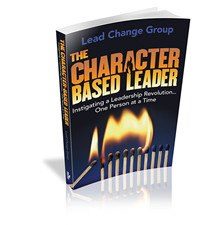Today I visited with a neighbor that was emphasizing how much the company her husband works for values integrity.

As she shared her thoughts I imagined the difference between the list of core values that hang on walls and collect dust, and those that are used to guide decisions.
She went on to share a story about a compound that the company had decided they would not continue to use for their expat’s housing because of extraordinary cost.
The first thing the company did was to decide that anyone that was already living there could stay.
- (A choice that will cost the company a few extra dollars but prevents unnecessary stress on families. And keeps their workers more focused on their jobs.)
The second decision came when a new executive moved to the area and insisted on living in that compound.
[Tweet “”Together You Stand, Divided You Fall””]
…You’ve heard it before, maybe a million times. But does it apply to life outside of a battlefield?
I believe it has deep lessons for our world, as dividers often use this truth to gain power and keep control.
- In families.
- In workplaces.
- And in nations.
If truth is important to you.
If people are important to you.
If the health of your family, workplace, nation and our world is important to you…
You absolutely must know the importance of this truth.
And you must be able to identify and shine a light on those that seek to divide and destroy.
Need help dealing with a manipulator? (Also Known As – A Divider) …Follow the link to this post.
 I’m curious, have you pondered the importance of those words before? PLEASE Share!
I’m curious, have you pondered the importance of those words before? PLEASE Share!
“Together You Stand, Divided You Fall.”
Below are several REAL examples of opportunities that curious leaders won’t miss:
1. Managers that work in different departments have daily opportunities to serve each other at a high level.
- However the executives they report to frequently talk smack about each other and go out of their way to avoid working together.
- So the managers follow the example that has been set for them – spending more time in turf battles than aiding each other.
- Their teams become ropes in a tug-of-war.
(more…)

Several years ago I sat in a room full of volunteers that were being trained to go into schools and work with children that were at risk of dropping out. One of our exercises was a simulation that was designed to help us better understand the day-to-day realities for their families.
- We were divided up into small groups.
- Each one of us was given a role to play.
- Then we were given a real life problem that needed to be solved.
- And a name of a place we needed to go to for help.
In the simulation I was the small child of a single mother that had no car.
- “My mother” needed food and a job and childcare.
The simulation was timed to help us understand everything that she needed to accomplish in one day – just to bring home food. (Let alone finding a job or daycare.)
Each time we got off the simulated bus, we walked into a facility and stood in a long line. To eventually be re-directed to another place for services that was across town with different operating hours and another long line.
My job was to simulate how a child begins to act as a few hours becomes a day without food, without a nap, without play.
In the 90’s I read The Seven Habits of Highly Effective People for the first time.

I immediately made my own infographic of the four quadrants and added the quotes below and put them in my purse and in my planner.
[Tweet ““Be a light, not a judge.” S.R. Covey”]
[Tweet “”Be a model, not a critic.” S.R. Covey”]
[Tweet “”Be part of the solution, not part of the problem.” S.R. Covey”]







